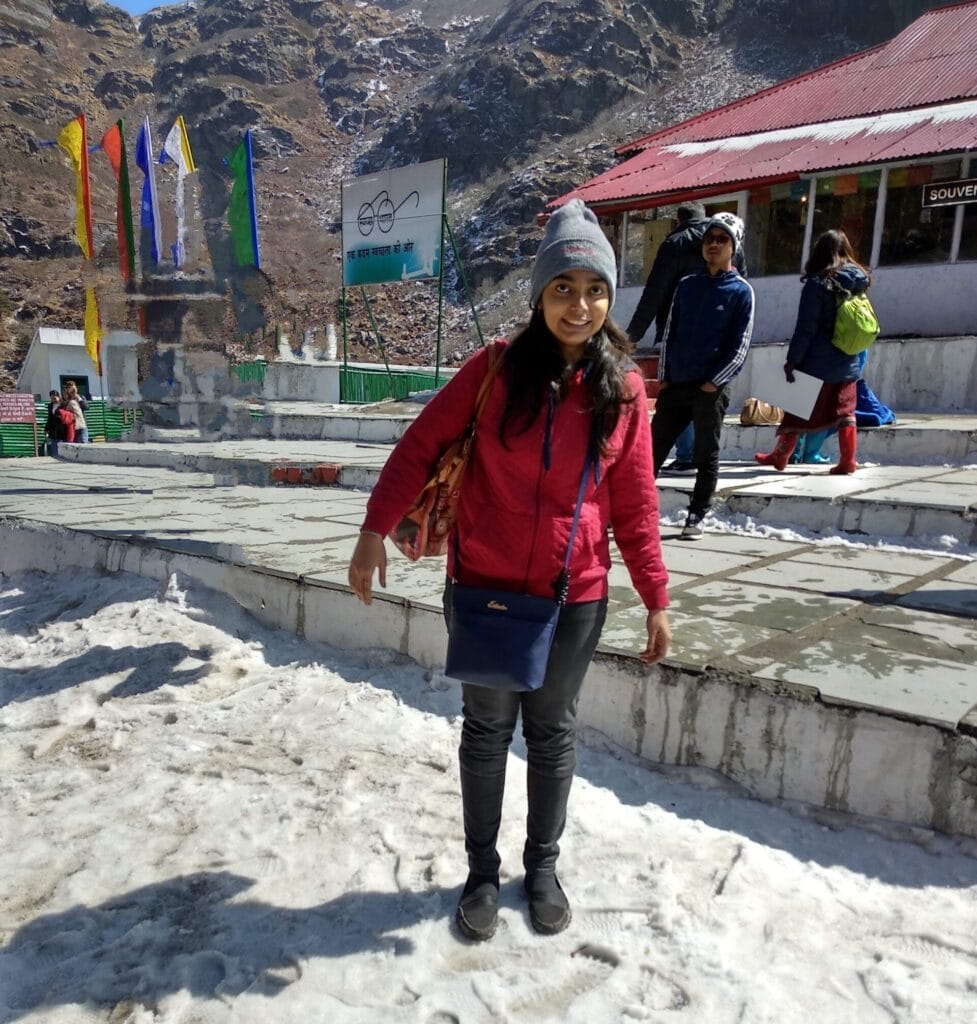Nestled in the eastern Himalayas, Nathula Pass is a high-altitude mountain pass situated in Dongkya Himalayan Range known for its mesmerizing beauty and strategic importance. Nathu means ‘listening ears’, and La means ‘pass’. Nathu La is one of the three open trading border posts between India and China.
I had undertaken this fabulous journey with Expedia, and here is a link to the package of Gangtok & Sikkim. Please check this link out if you are looking for a tour to this spectacular pass.
This strategically important pass connects India’s Sikkim state to Yadong County in Tibet (which now belongs to China). At an altitude of 4,310 meters (14,140 feet), Nathula is not only a breathtaking tourist destination but also a place of profound strategic and cultural importance for India. Here’s a detailed look at what makes Nathula Pass such a unique place to visit.
Brief History of Nathula Pass
Nathu La Pass was closed for nearly 40 years after the People’s Republic of China suppressed a Tibetan uprising in 1959. However, during former Indian Prime Minister Atal Bihari Vajpayee’s visit to China in 2003, discussions to reopen this strategic route were renewed. The pass was officially reopened in 2006 and has since served as an official Border Personnel Meeting (BPM) point.
As one of the three active trading border posts between India and China, Nathu La Pass plays a crucial role in Sino-Indian trade. Its reopening has not only strengthened the economy and enhanced border relations but has also reduced travel distances between key Buddhist and Hindu pilgrimage sites.
Nathula Pass Height & Location
Located on the Indo-Tibetan border, Nathula Pass sits at an impressive altitude of 4,310 meters (14,140 feet) above sea level. This makes it one of the highest motorable passes in the world, offering travelers a rare opportunity to traverse the lofty heights of the Himalayas. Situated approximately 54 kilometers from Gangtok, the capital of Sikkim, Nathula is strategically positioned along the ancient Silk Road, historically linking the bustling markets of India with the serene landscapes of Tibet.

Weather and Temperatures at Nathula Pass
The weather at Nathula Pass is as dynamic as its landscape, characterized by extreme conditions due to its high elevation. Here is a lowdown on seasons and the weather at Nathu La.
- Winter (November to February): Winters are harsh, with temperatures plummeting below freezing. Heavy snowfall is common, often blanketing the pass from December to February. Winter temperatures can dip as low as -25°C. These conditions can lead to road closures, making travel during this season challenging and sometimes inaccessible.
- Summer (May to September): The summer months bring relatively milder weather, with temperatures ranging from 10°C to 15°C. This period is ideal for trekking and sightseeing, as the roads are generally open, and the skies are clear, offering unobstructed views of the majestic Himalayas.
- Monsoon (June to September): Monsoon rains bring heavy rains and fog, increasing the risk of landslides and slippery roads. Visibility can be significantly reduced, making travel hazardous. It’s advisable to avoid visiting during the peak monsoon season unless you’re prepared for the unpredictable weather.
Given these conditions, the best time to visit Nathula Pass is between May and October, when the weather is relatively stable, and the natural beauty of the region is at its peak.
Why is Nathula Pass important for India?
Nathula Pass is not just a scenic marvel; it holds profound strategic, economic, and cultural significance for India:
- Strategic Importance: Situated on the border with China, Nathula Pass is a critical location for the Indian Army. The pass provides strategic depth and serves as a vital route for defense logistics in the region. The presence of well-trained soldiers ensures the security of this sensitive border area.
- Economic Significance: Historically part of the Silk Road, Nathula facilitated trade between India and Tibet, dealing in goods like wool, medicinal herbs, and textiles. Although trade was halted after the Sino-Indian War in 1962, the pass reopened in 2006 for limited trade, symbolizing renewed cooperation and economic ties between the two nations.
- Cultural and Diplomatic Symbol: Nathula Pass stands as a symbol of peace and diplomacy. The harmonious presence of Indian and Chinese soldiers, who occasionally exchange greetings and gifts, underscores the spirit of friendship and mutual respect despite geopolitical tensions.
How to Reach Nathu la Pass?
Embarking on a journey to Nathula Pass requires careful planning due to its remote location and the need for special permits. Here’s a step-by-step guide to reaching this magnificent destination from Gangtok:
- Starting Point – Gangtok: Nathula Pass is approximately 54 kilometers from Gangtok, making the capital city the primary gateway for travelers.
- By Road: The most common way to reach Nathula Pass is by road. It’s advisable to rent a four-wheel-drive vehicle due to the steep and winding terrain. Most local travel agencies in Gangtok offer shared or private vehicle rentals, complete with experienced drivers who are well-versed in navigating the mountainous roads.
- Permits: Visiting Nathula Pass requires special permits, especially since it lies close to an international border. Indian nationals can obtain these permits through local tour operators or by visiting the Tourism and Civil Aviation Department of Sikkim. Foreign nationals are generally not permitted to visit Nathula Pass due to security restrictions.
- Travel Preparations: Given the high altitude, it’s essential to acclimatize in Gangtok for at least a day before ascending to Nathula. Carrying warm clothing, high-energy snacks, and plenty of water is recommended to stay comfortable and energized during the journey.
Experiencing Nathu la Pass: What to Expect?
Visiting Nathula Pass is an immersive experience that blends natural beauty, cultural richness, and historical depth. Here’s what you can expect during your visit:

- The Scenic Drive: The journey to Nathula is nothing short of spectacular. As you ascend, the landscape transitions from lush green valleys to rugged, rocky terrains adorned with snow. The presence of colorful Tibetan prayer flags fluttering in the wind adds a vibrant touch to the scenery, symbolizing peace and goodwill.
- First Impressions: Upon arrival, the sheer scale of the Himalayas will leave you in awe. The crisp, thin air and the panoramic views of snow-capped peaks create an exhilarating atmosphere. The sight of the Indian and Chinese flags side by side marks the international border, adding a sense of solemnity and significance to your visit.
- Border Experience: Standing at the Indo-Tibetan border, separated by a barbed-wire fence, offers a unique glimpse into geopolitical realities. Despite the tense nature of borders, the interactions between Indian and Chinese soldiers often reflect mutual respect and camaraderie, providing a nuanced perspective on international relations.
- Altitude and Serenity: The high altitude brings a profound sense of calm and introspection. The tranquil silence, broken only by the whispering winds or distant conversations, creates a serene environment perfect for reflection and appreciation of nature’s magnificence. However, be mindful of altitude-related symptoms like dizziness or fatigue, and take necessary precautions.
- Cultural Insights: Nathula is steeped in cultural significance. Prayer stones, shrines, and small temples dotted around the pass reflect the deep-rooted Tibetan Buddhist traditions. Visiting the nearby Baba Harbhajan Singh Memorial Temple offers a spiritual & mysterious dimension to the journey, honoring an Indian soldier revered for his bravery and sacrifice. If you want to know more about this mystery check out my blog post.
- Nearby Attractions: Enhance your Nathula Pass experience by exploring nearby attractions:
- Tsomgo Lake (Changu Lake): A glacial lake about 38 kilometers from Gangtok, renowned for its stunning blue waters and surrounding alpine scenery.
- Kupup Lake: Known as the “Elephant Lake” due to its unique shape, Kupup offers tranquil landscapes and a perfect spot for photography enthusiasts.
How to get a permit for Nathu La Pass?
Nathu la Pass – Permit is issued by Tourism Department and vehicle permit is issued by Police Check Post for domestic tourist issued through a registered Travel Agency. The cost of this permit is Rs. 200 per person. You will need a voter id/ driving license and 2 passport photographs to apply for this. Please note, aadhaar is not accepted.
Final Tips for Traveling to Nathula Pass
To make the most of your adventure, consider the following tips:
- Best Time to Visit: Aim for May to October when the weather is favorable, and the roads are accessible.
- Altitude Precautions: Acclimatize properly and consider carrying medication for altitude sickness. Listen to your body and take breaks as needed.
- Travel Light: Bring warm clothing, high-energy snacks, and water for the journey.
- Permits: Secure all necessary permits well in advance to avoid last-minute hassles.
- Local Guidance: Engage with local guides or tour operators who can provide valuable insights and ensure a safe journey.
Conclusion
Nathula Pass is more than just a high-altitude crossing; it’s a journey into the heart of the Himalayas, offering a blend of natural splendor, historical depth, and cultural richness. Whether you’re captivated by the panoramic mountain vistas, intrigued by the strategic significance, or inspired by the serene environment, Nathula Pass promises an enriching and memorable experience. As you stand at the crossroads of India and Tibet, surrounded by the timeless beauty of the Himalayas, you’ll understand why Nathula Pass remains a cherished gem in India’s northeastern landscape.
Embark on this extraordinary adventure, and let Nathula Pass unveil its majestic charm and profound stories, leaving you with memories that will last a lifetime. You can start your adventure here.
*Contains sponsored links.
My Other Posts
If you are looking for options in Kashmir, check out my posts on Pahalgam, Gulmarg, Snowfall in Kashmir, and Best Time to Visit Kashmir. If you are looking for options in Ladakh, check out Ladakh Weather, Nubra Valley, 5 Days Kashmir Itinerary, Best Packing tips for Ladakh & best tourist places in Ladakh.
If you are looking for something in Sikkim, check Tsomgo Lake and Batasia Loop. If you are looking for some jungle safari read Gir Safari, or Bandipur Safari, feel blessed at Sri Venugopala Swamy Temple in Mysore.
If you are looking for places to visit in the Andaman Islands, please check my posts on Radhanagar Beach & Ross Island.
If you are looking for other options, check my posts on Murud Janjira, Kashid, Pirwadi Beach and Kihim Beach in Maharashtra or Malshej Ghat, Matheran Resorts, Kailash Temple Ellora, Vandri Lake, Kelwa Beach in Palghar & Mahabaleshwar.
Alternatively, if you are interested in some Religious tourism, please check my posts on Golden Temple, Kamakhya, Trimbakeshwar, Somnath Temple and Kashi Vishwanath. If you are looking for North East Adventure tours, check my posts on Shillong, Meghalaya, Dawki, Double Decker Living Root Trek, and 7-Day North East Itinerary.
For some adventure tours in the south check out Mandalpatti Trek, Discovering 10 Coorg Tourist Places, Coorg Weather & Best Time and Madikeri Fort.
If you are looking for some spirituality, you can check out Ganga Aarti in Dashashwamedh Ghat or Ghats in Varanasi.


4 thoughts on “Nathula Pass Travel Guide – A Spectacular Himalayan Gateway”